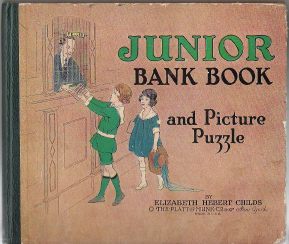I heard back from the National Federation of Community Development Credit Unions Communications Officer who gave me the complete list of CDCUs.
Turns out there is one CDCU in Massachusetts, and it's in Winthrop.
To recap for myself, all the CDCUs are members of the National Federation of Community Development Credit Unions. Im curious --what are the costs/ benefits of joining this Federation and thus becoming a CDCU? All CDCUs can be CDFIs but only about 80 of the 225 CDCUs have become CDFIs. What added costs/ benefits come with being a CDCU CDFI?
One point of confusion --in an earlier entry I discovered that there is a South End CDFI in Boston. Why isnt this mentioned in the NationalFederation list?
I want to understand all this because CDCUs and CDFIs sound really promising to me now as a relatively ethical place to have an account. I'll send another email to the National Federation of Community Development Credit Unions Communications Officer!
Today I also made some discoveries while listening to another episode of "Wizards of Money," this one about
democratizing the monetary system. A couple of things stay with me: first, Smithy explains how the national monetary system is not democratic right now. For one thing, banks are one source of creating money --not literally, but in the form of credit/loans. Banks are not democratic organizations where the public gets to decide who we think should get a loan. Rather, the banks get a lot of power to decide this. THANK YOU. I needed this reminder. I have overlooked this, but deep down knew there was something fundamentally problematic about commercial banks. Commerical banks are in conflict with democratically decided development. And they makes their loan decisions almost entirely based on the rate of profit that will translate into earnings for their stockholders, which will ensure that the bank survives, and gets more power to decide loans, and so on.
Smithy also says the Fed creates new money; I don't understand this process yet --I will try to soon-- but I do understand that the Fed is also not a democratic organization. I'll need to review more about how people get appointed to the Fed to clarify exactly how the Fed is undemocratic. But this is key stuff for understanding the fundamental problems with our monetary system: that fact that it is not democratic.
Smithy looks at alternative, or complementary, currencies (such as one in San Francisco called Bread dollars) to see a model of an actually existing democratic monetary system. I had always been charmed by alternative currency projects, but I had not realized that they provide an important model of a democratic monetary system. They are democratic in that every person who has signed onto the currency has one vote --for instance, if the Bread dollars organizers suggest making a bread dollars loan or want to introduce more Bread dollars into circulation. They even aim for consensus, modifying decisions until everyone agrees. (Recall the wisdom of crowds...)
And so, this helps me clarify my suspicion of the term socially responsible investment. Interesting that while reviewing the definition of that term earlier this week I said I kind of liked the definition...I was forgetting that for me, socially responsible means democratic -that everyone can participate in the decisions that affect all of us. I believe in democracy as a spiritual and political good --perhaps the one I care most about right now. Socially responsible investing is NOT about making investment decisions and economic development more democratic. It's a way of lessening certain forms of exploitation and abuse BUT IT SO EASILY DISTRACTS, EVEN ME, FROM THE FUNDAMENTAL PROBLEMS OF AN UNDEMOCRATIC MONETARY SYSTEM. Whew. I prefer what is called socially responsible investing to other kinds of investing, but I want a still more radical term, like democratic monetary system, to ground us and guide the changes we ask for.
So, now I have to clarify the ways in which the national (and international) dominant monetary system is not democratic. And what it would mean/ look like if it were democratic!
This gets to the crux of how capitalism and democracy can (or can't) coexist--something I'm still exploring.



